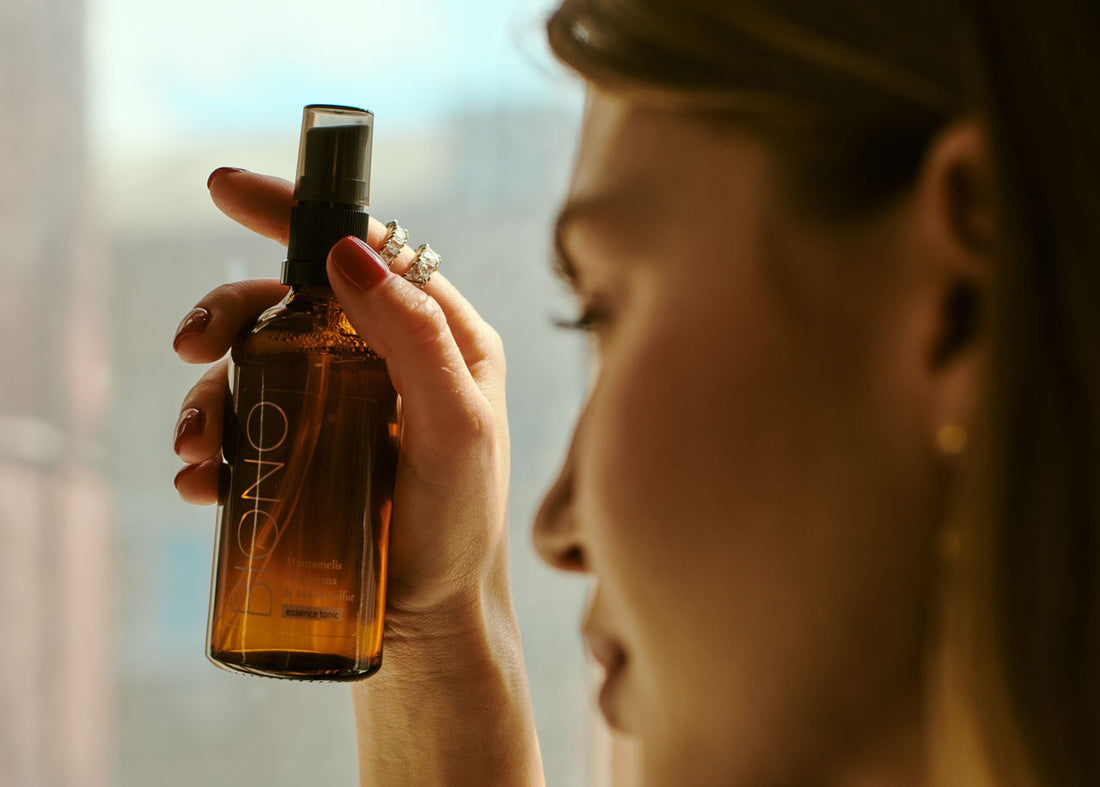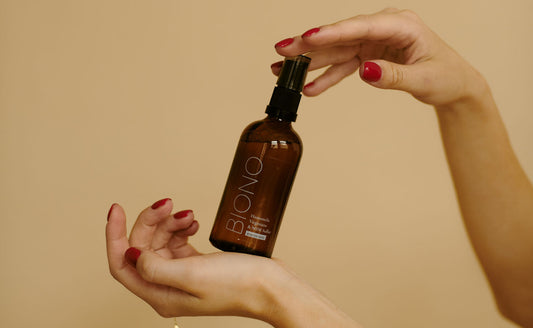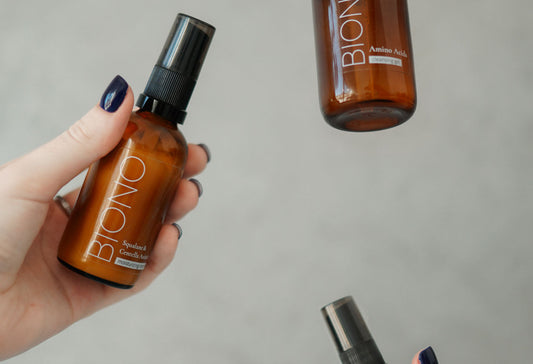
Facial toner after 30: why you need it and how to choose the right one
Share
After 30 years, the skin begins to change: collagen production decreases, the first wrinkles appear, the skin loses moisture faster than before. At this stage, it is important not only to cleanse the skin, but also to moisturize, strengthen and maintain its tone. One of the products that should be added to daily care is a facial toner. But not just any, but one that meets the needs of mature skin.
Why do skin needs change after 30?
After the age of 30, the skin begins to undergo a natural process of age-related changes, which are not always immediately noticeable, but gradually affect its appearance and general condition. The rate of cell renewal slows down, the production of collagen and elastin decreases, and with them - the elasticity of the skin. Not only the texture of the face changes, but also the skin's ability to heal itself.
The hydration that seemed stable in our 20s is no longer maintained naturally in sufficient quantities. The skin loses moisture faster, which leads to dryness, fine lines, and dullness. The ability to retain moisture in the deep layers of the epidermis also decreases. And along with this, the pH balance can be disrupted - the skin becomes more sensitive to external stimuli, stress, and climate change.
In such conditions, basic cleansing is no longer enough. It can no longer provide the skin with everything it needs — hydration, nutrition, and protection. Therefore, a comprehensive approach to care comes to the fore, where toners with active ingredients play an important role. They not only refresh, but also work to restore water balance, preparing the skin for effective absorption of subsequent products.
Choosing cosmetics after 30 years: what to pay attention to?
After 30, choosing cosmetics becomes more responsible - now it is not just important that it "cleanses well" or "smells nice." The skin gradually loses moisture, becomes less elastic, and regeneration processes slow down. That is why it is worth moving from basic care to products with active ingredients that really work.
The main focus should be on hydration, protection from external factors and maintaining elasticity. In the composition of daily cosmetics, you should look for hyaluronic acid, niacinamide, peptides, antioxidants, ceramide or squalane. These components maintain water balance, reduce the first signs of aging and strengthen the skin's barrier functions.
It is also important to pay attention to night care: it is at night that the skin actively regenerates, so a well-chosen cream or serum can give a tangible result. Don't forget about toner, which works as a preparatory stage - it improves the penetration of active substances and moisturizes the skin before applying serum or cream.
What role does toner play in age-related skin care?
In skin care after 30, toner is no longer just an additional tool - it is a full-fledged stage that is of great importance for the condition of the skin. It performs several functions at once, but the main one is moisturizing and restoring balance after cleansing. After all, the older the skin, the faster it loses moisture, and it becomes more difficult to restore it.
Toner works as a "conductor" of active ingredients that will be applied later. When the skin is moist, its ability to absorb nutrients increases many times over. So a quality toner not only prepares the face for serum or cream, but also increases the effectiveness of their action. This is especially important for anti-aging care, where each component must work as precisely as possible.
Modern toners are not just light water. They often contain antioxidants, soothing extracts, vitamins, and moisturizers that strengthen the skin, relieve irritation, and fight oxidative stress. In other words, they are not just an auxiliary product, but an active participant in the anti-aging routine that helps the skin stay fresh, elastic, and resistant to external factors.
What ingredients should you look for in a toner after 30?
After 30, skin is no longer forgiving of careless care or poor-quality ingredients. That's why when choosing a toner, it's worth carefully studying the composition - and looking not just for "something moisturizing", but for active ingredients that work to maintain elasticity, radiance and protect against premature aging.
First of all, pay attention to hyaluronic acid - it restores moisture in the skin and provides natural elasticity. Peptides stimulate collagen synthesis, strengthen the skin structure, and niacinamide improves tone, reduces pigmentation and has a mild anti-inflammatory effect. Together, these components create powerful support for skin that loses elasticity and moisture with age.
Antioxidants are another must-have. Look for vitamin C, green tea, coenzyme Q10, or vitamin E in your toner. They protect cells from oxidative stress, which accelerates aging, help fight dullness, and stimulate natural repair processes.
And most importantly: avoid alcohol-based formulas. Toners with a high alcohol content can dry out the skin, disrupt its barrier, and cause sensitivity. Choose formulas without aggressive ingredients, with a mild base, and natural extracts — they create the delicate yet effective care that skin after 30 will truly appreciate.
How to choose the right toner for your skin type after 30?
After 30, skin becomes more demanding, and universal products no longer always work. The choice of toner should be based not only on age, but also on skin type, as its needs can change over time - dry skin becomes sensitive, oily skin loses elasticity, combination skin reacts to stress or climate.
For dry skin, choose toners with hyaluronic acid, beta-glucan, squalane, or natural oils in microdoses. They provide deep hydration and create a feeling of comfort without stickiness. For combination skin, multi-functional toners with niacinamide or peptides are suitable, which both moisturize and balance oily areas. Oily skin, on the other hand, needs light toners with anti-inflammatory and sebum-regulating ingredients — for example, with aloe, green tea, or a low concentration of acids.
Sensitive skin in adulthood requires special attention. With age, it often becomes reactive - reacts to temperature changes, water or cosmetics. In this case, it is better to choose hypoallergenic toners with a minimalist composition: without fragrances, alcohol and potential irritants. Products with panthenol, ceramides, and centella asiatica work well.
Among the proven solutions are toners with anti-aging effect, which combine hydration and nutrition. They do not promise miracles in one day, but they help the skin look well-groomed, tightened and fresh. It is important not to just choose a popular product, but one that really meets your needs. After all, a competently selected toner is the basis of effective daily care after 30.
How to properly use toner in daily care?
Toner is not just “another product,” but a full-fledged step in your daily skincare routine. To get the most out of it, it’s important to know when and how to apply it. The best option is right after cleansing, on still slightly damp skin. You can do this both in the morning and at night, depending on your needs. In the morning, toner helps hydrate your skin and prepare it for SPF and makeup, and in the evening, it soothes and “opens the door” for serum or night cream.
Many people are confused: if there is a toner, do you also need a tonic? The answer is simple: no, not necessarily. In most cases, a toner completely replaces a tonic, especially if the skin does not need additional cleansing after washing. If the care includes heavy makeup or SPF, a tonic can be an additional step before a toner, but definitely not its analogue.
To consolidate the result, the toner needs to be supplemented with the right products: a serum with active ingredients (anti-aging, moisturizing or brightening), a day or night cream, depending on the time of day, and definitely SPF protection in the morning. This combination will help keep your skin moisturized, supple and protected every day, especially after 30, when every step in your care matters.
How to use toner correctly: reviews and practical experience
When it comes to how to use toner properly, real user reviews are often no less useful than manufacturer instructions. Many share their experience that regular use of toner twice a day — morning and evening — gives a noticeable effect after 1–2 weeks. The skin becomes more moisturized, softer, the tone evens out, and dryness and tightness disappear.
Judging by the reviews, toner works best when it is rubbed into the skin with your hands, rather than applied with a cotton pad — this way the active ingredients are not lost and penetrate deeper layers better. This is especially true for gel or moisturizing formulas. Users also note that applying toner to damp skin after washing significantly enhances the moisturizing effect, as if the toner “locks” moisture inside.
Those who have long included toner in their skin care after 30 agree on one thing: this stage really changes the quality of the skin, especially when used regularly and combined with the right serum and cream. Reviews confirm: even the simple addition of toner to the routine makes care more holistic, and the skin more resistant to daily challenges.
Facial toner after 30: how to choose the right one and why you need it
After 30, skin care reaches a new level. It is no longer just cleansing and basic moisturizing - it is a conscious choice in favor of healthy, balanced and well-groomed skin. It is the toner that becomes the key step that connects cleansing with the active phase of care. It not only prepares the skin for serums and creams, but also contributes to moisturizing, soothing and maintaining natural balance.
A properly selected toner is an investment in the elasticity, freshness and resilience of the skin. And although the result is not always visible immediately, it is the regular use of a quality toner that creates what is called a “healthy look without makeup.” This is a simple but important step in care, which over time gives the greatest effect.







